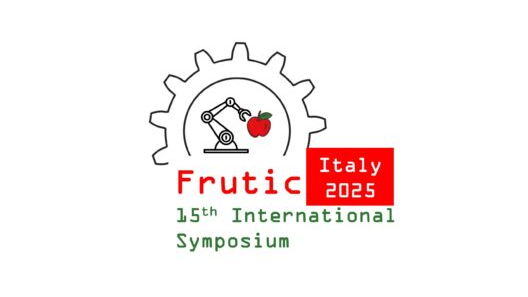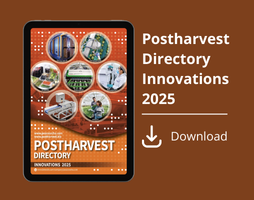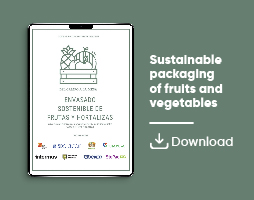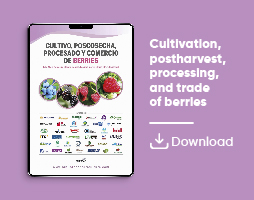Actualidad
Ethanol vapor applied to Medjool dates reduced mold counts
The treatment with ethanol vapor had lower efficacy on bacerial load, and changed the volatile profile of the dates but did not have an apparent influence of their flavor
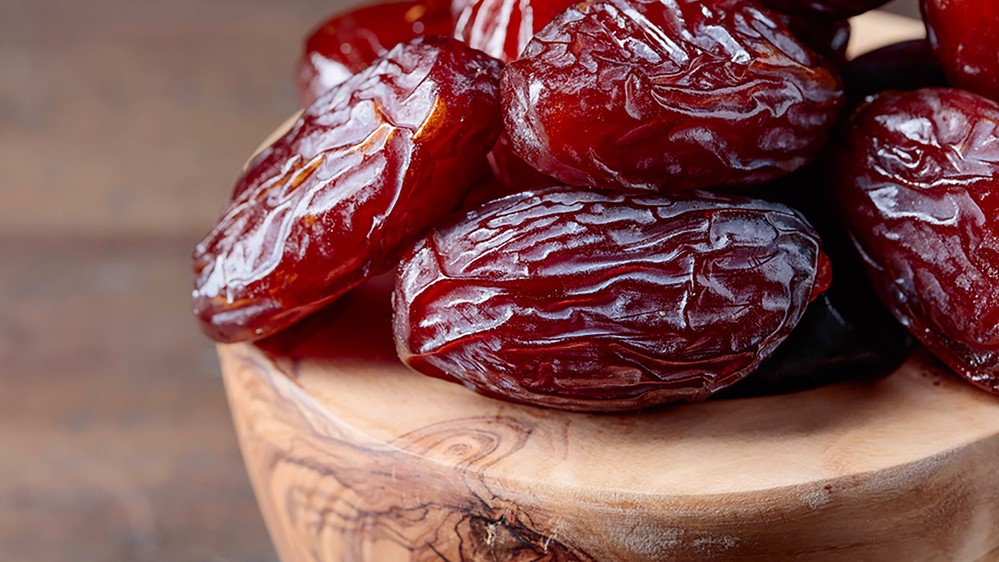
Redaccion
Medjool dates are in high demand but the level of microbial load can exceed thresholds set by some countries.
The objective was therefore to identify methods to reduce the microbial load of Medjool dates after harvest without compromising its quality.
Medjool dates were obtained after harvest from the same orchard over 2 seasons or from a packing house after 6 month of storage.
Treatments
The dates were treated with ethanol vapor, cold-plasma applicator of hydrogen peroxide and a commercial formulation of peracetic acid and stored at 0°C for one month or −18°C for 6 month.
Results
In all experiments, treatment with ethanol vapor for 20 hours reduced fungal load by at least 2 orders of magnitude but had lower efficacy with respect to bacterial load.
The ethanol vapor treatment was also effective when carried out after 6 month of storage at −18°C.
Treatment with hydrogen peroxide reduced bacterial load but showed potential for skin damage.
Similar levels of external and total microbial load were measured suggesting that external contamination was dominant in asymptomatic fruit.
Sequencing of microbial DNA from the date tissue showed that Aspergillus was the predominant fungal genus while Bacillus was the dominant bacterial genus after shelf life.
Summary
The treatment with ethanol vapor changed the volatile profile of the dates but did not have an apparent influence of their flavor.
The ethanol vapor treatment can be a useful tool to reduce microbial load in relevant postharvest systems.
Background
Date Palm (Phoenix dactylifera L.) are an important fruit crop with long shelf life under ambient conditions, making it a valuable food source, especially for regions with low availability of storage facilities.
Medjool dates, a premium cultivar, plenty of health benefits
With relatively large fruit, high eating quality and strong demand Medjool dates are considered a premium cultivar and they are marketed either as semi-dry and soft form with water content of 20–30 % or >30 %, respectively (Lobo et al., 2013).
Compositional and functional studies suggest that dates possess significant health benefits (Ahmed et al., 2013, Borochov-Neori et al., 2013).
Total sugars of Medjool dates can reach 66 % of the dry weight and they contain anthocyanins, condensed tannins that polymerize when ripe, flavonoids and antioxidants (Ahmed et al., 2013).
Storage and disorders
Medjool dates can be effectively stored for over 1 year at −18 °C and depending on the water content for one month at 20 °C at RH of 65–75 %.
The main postharvest problem of Medjool dates is skin separation which can strongly affect their price in premium markets.
Of the pathological disorders, 'souring' by yeasts and bacteria can result in fermentation processes especially under high storage temperature.
It is known that fungal composition of dates changes during maturation and can differ in the skin or the pulp.
A metagenomics study showed that the pulp of Medjool dates at the earlier stages contained higher Penicillium abundance while Cladosporium was more abundant in the skin (Piombo et al., 2020).
Aspergillus
Aspergillus was more abundant in skin of the brown, ripe Tamer stage but was not the exclusive genus and Candida was the major yeast genus in the ripe stage.
Other reports suggest that Aspergillus is the most abundant fungal genus in dried dates (Nikolchina and Rodrigues, 2021; Quaglia et al., 2020).
Internal development of Aspergillus in the cavity between the seed and the flesh was shown to occur at early stages of fruit development (Cohen et al., 2021).
Incidence of symptomatic fruit was reported to be in the range of 0.1 to < 3.5 % but incidence of Aspergillus in asymptomatic fruit was 62 % with high variability between orchards.
Fruit with external decay symptoms are removed before storage and molds such as Aspergillus, Penicillium and Alternaria can develop superficially on the skin when ambient RH is too high (Yahia et al., 2013).
External development of molds into the flesh after storage is typically restricted by the low water activity of the tissue.
Bacteria
Bacterial composition of Medjool dates sampled from various sources showed variable levels of yeasts at the range of 1.9–4.0 log CFU g−1, molds up to a level of 2.85 log CFU g−1, Staphilococcus aureus up to level of 2.4 log CFU g−1 but coliforms and Bacillus sp. were non-detectible (Elhoumaizi et al., 2023).
Food safety
Food safety is an issue of concern with dates and proper agricultural and postharvest hygiene practices are required to minimize it (Yahia et al., 2013).
Some countries enforce maximum microbial load with CFU values of 10,000, 1000 and 10 for molds, yeast and bacteria but there are multiple standards for dates (Aleid et al., 2014) and some exporters impose lower thresholds in order to avoid rejections.
Means to reduce microbial load
Means to reduce microbial load include
- heat treatment,
- water sanitation with chlorine,
- ozone,
- peracetic acid and
- hydrogen peroxide
but wet treatments for Medjool dates is not a common practice (A. Greenberg, personal communication).
Ethanol
Ethanol is a very potent disinfectant in medicine and its usage as a wet treatment to control postharvest decay was described for lemons, peaches, cherries, grapes (Feliziani et al., 2016, Lichter et al., 2002) and other crops.
Ethanol vapor has known antifungal properties in the context of postharvest systems (e.g., Chervin et al., 2005, Ji et al., 2021a, Lurie et al., 2006, Wang et al., 2011) including applications for fresh-cuts (Plotto et al., 2006).
There are multiple reports on the physiological effects of ethanol vapor, for example on the prevention of ethylene action and chlorohyl degradation in broccoli florets (Asoda et al., 2009, Fukasawa et al., 2010), induction of ethylene biosynthetic genes in tomato but prevention of downstream ethylene action in tomato (Suzuki and Nagata, 2019).
There are also reports on delay of ripening in sweet melons (Jin et al., 2013), mitigation of chilling injury in hardy kiwifruit (Xiong et al., 2024) and positive effects on blueberry firmness (Ji et al., 2021b). These effects may be associated with the effect of ethanol as an anaerobic metabolite (Pesis, 2005) but may also be assocated with effects on membrane and protein structures.
Application of ethanol
Application of ethanol vapor can be directly from the liquid from alcohol powder, silicate formulation or gels (Choosung et al., 2019, Mu et al., 2017, Suzuki et al., 2004) with fast or slow release pattern.
The growing number of reports on the usage of ethanol vapor is in accordance with the general increasing interest in postharvest fumigation technologies (Zhang et al., 2024).
Ethanol entering the fruit tissue
If ethanol enters the fruit tissue it is likely to be metabolized to acetaldehyde and to influence the tissue volatile composition (Pesis, 2005, Tyagi et al., 2020).
Alcohols and esters were the two dominant chemical groups of volatile organic compounds (VOC) among 5 date cultivars and there were significant changes in VOC composition along development (Guido et al., 2011).
Profiling 13 date varieties in Egypt, one of which was Medjool, identified 89 volatiles (Khalil et al., 2017). It was suggested that lipid and phenylpropanoid derivatives were the major components and that 2,3-butanediol, hexanal, hexanol and cinnamaldehyde contributed the most to classification of different varieties.
The characterization of 148 date palm samples representing 135 varieties resulted in the identification of 80 volatile aroma compounds (Flowers et al., 2022).
Interestingly, among those volatiles are 30 compounds that were not reported for palm dates before and they did not identify some compounds that seemed dominant in previous studies.
Goals of the study
Given the fact that wet disinfection of Medjool dates is a not a common or recommended practice, vapor or gas phase treatment becomes a valid option.
The current study focused on how ethanol vapor after harvest or after storage reduces microbial load of Medjool dates and does it affect the major quality traits of the fruit.
Sources
Postharvest ethanol vapor treatment reduces fungal load of Medjool dates
Author links open overlay panel
Yaara Danino, Bettina Kochanek, Kamal Tyagi & Amnon Lichter
Postharvest Biology and Technology, Volume 227, September 2025, 113570
https://doi.org/10.1016/j.postharvbio.2025.113570
https://www.sciencedirect.com/science/article/abs/pii/S0925521425001826
Picture, https://royalpalm-dates.com/product/medjool-dates/



